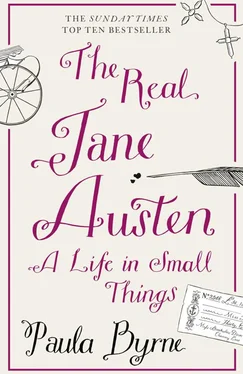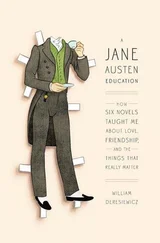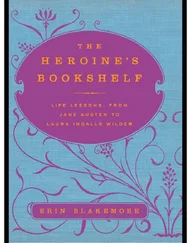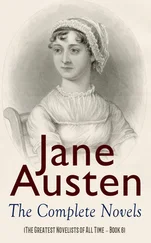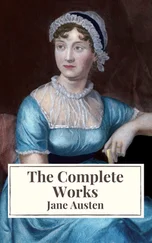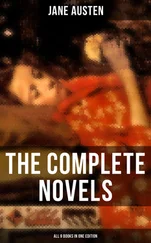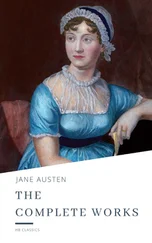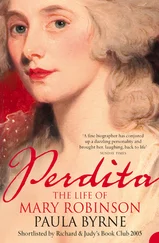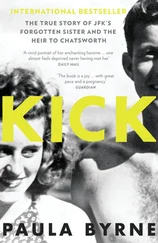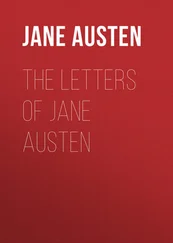By December of that year George, now four, was living with foster parents. His mother wrote that he was still having fits. ‘My poor little George is come to see me today. He seems pretty well, tho’ he had a fit lately; it was near a twelve-month since he had one before, so [I] was in hopes they had left him, but must not flatter myself so now.’7 The severity of his condition is apparent from a letter in which his godfather Tysoe Saul Hancock, Mr Austen’s brother-in-law, mentions ‘the case of my godson who must be provided for without the least hopes of his being able to assist himself’.8
Around the time this letter was written, Mrs Cassandra Austen told a relative that she could not visit Kent because of her domestic situation.9 She was seven months pregnant and had four young boys all living at home: seven-year-old James, George six and with special needs, Edward just turned five, Henry seventeen months and recently back from being nursed in the village. There were servants to help, but it was necessary to manage both the household and its small plot of land, which had chickens and a cow. The Reverend George Austen was busy with his parish duties and business affairs. The following year he obtained the living of a second parish. In these circumstances, it was hardly surprising that a home was found for young George where he could be given more attention and assistance.10
Mrs Austen was no stranger to mental infirmity. Her younger ‘imbecile brother’ Tom had been placed under the care of a parish clerk, Francis Culham, at Monk Sherborne near Basingstoke. George was sent to join him there when it became clear that he was not improving. He lived with his uncle Tom and the Culhams for the rest of his life, surviving into his seventies. He died of dropsy (accumulation of bodily fluid, often caused by kidney failure) early in the reign of Queen Victoria, just over twenty years after his sister Jane’s death. On his death certificate he was described as a ‘gentleman’.
On Mrs Austen’s death in 1827, some stocks that she owned were sold and the proceeds divided among her surviving children. Edward Knight, adopted into wealth, made his portion over to George to pay for his care. Some biographers have taken a censorious attitude towards the Austens for their treatment of George. Several have assumed that the family was ashamed and ill-prepared when it came to mental illness, exiling George for the sake of the other children. Others have argued to the contrary that a reference in Jane Austen’s letters to ‘talking with fingers’ suggests that she might have been adept at sign language as a result of conversing with her allegedly deaf ‘idiot’ brother. We will never know whether or not she visited him at the Culhams’.
There were many private madhouses in the Georgian era, some of which had dark reputations for their inhumane treatment of the insane, Bedlam Hospital in London being the most infamous. The majority of the mentally ill were confined to workhouses, poorhouses and prison. By boarding out George with a family, the Austens saved him from this fate.
Jane Austen’s life coincided with a period of new enlightenment in relation to madness and mental incapacity. King George III went mad and was treated, in a firm and well-publicized manner, by Dr Francis Willis at his asylum in Lincolnshire. The search for a cure for the King led to a shift in public attitudes towards the mentally infirm. By the end of the century, the Quaker William Tuke had founded The Retreat, an asylum in York that pioneered the humane treatment of the mentally ill. It provided a model for other institutions.11
Thanks to the madness of King George, which was witnessed at first hand by the novelist Fanny Burney, mental illness ceased to be an unmentionable topic of conversation in polite society. Jane Austen frequently joked about madness in her earliest writings. As an adult she made fun of her family’s history of madness in relation to her niece Anna, who was hoping to marry, against her family’s wishes: ‘My dear Mrs Harrison, I shall say, I am afraid the young Man has some of your Family Madness – and though there often appears to be something of Madness in Anna too, I think she inherits more of it from her Mother’s family than from ours.’12 This is not entirely a joke: Jane Austen’s mother’s family, the Leighs of Stoneleigh, had a spectacular history of madness, and her attitude towards madness and mental illness shows a lack of embarrassment and sentiment perhaps because of her proximity to those affected by it. In addition to those in the immediate Austen family circle, her uncle Tom and her brother, Jane’s cousin Eliza de Feuillide had a son called Hastings who had ‘fits’ and did not develop like other children.
The story of George Austen remains shadowy. As a little girl, Jane was especially close to two other brothers Frank and Charles. Frank, nicknamed ‘Fly’, was a small, burly boy, ‘fearless of danger, braving pain’. He often got into trouble. Jane gives a lovely retrospective glimpse of his childhood self in a poem she wrote to celebrate the birth of his son:
My dearest Frank, I wish you joy
Of Mary’s safety with a Boy …
In him, in all his ways, may we
Another Francis William see! –
Thy infant days may he inherit,
Thy warmth, nay insolence of spirit.13
Warmth, insolence, spirit: these were qualities that Jane Austen had herself and that she valued in Frank. At the same time, she had a soft spot for Charles, the baby of the family, who was sweet-tempered and affectionate, without the fiery nature of Fly. It is easy to see him being dragged along by Jane to meet Cassandra’s coach. The affection in which she held her siblings is clear from the way that her novels are full of private jokes – a phenomenon that is common among large families, who so often have their own secret language.
It was not only because of the brothers that Steventon parsonage, the family home, was a household of boys. Jane Austen’s father George took in scholars to supplement his rector’s stipend, effectively running his own little boarding school. Over the years there were probably more than fifteen boys, who provided a network of contacts among prosperous local families. Many of them remained devoted to the Austens and among them were some potential suitors for the two girls. Jane’s mother Cassandra seems to have been very popular with the schoolboys. She composed comic verses for them. She wrote a funny poem urging one reluctant schoolboy to return to school and his studies, rather than wasting his time dancing. Another boy complained to Mrs Austen that he felt left out because she hadn’t written a special poem to him.
The first schoolboy to be taken on at Steventon, in 1773, was a five-year-old aristocrat, John Charles Wallop, Lord Lymington. He was the ‘backward’ and eccentric eldest son of Lord Portsmouth, who lived just ten miles away at Hurstbourne Park. A boy called William Vanderstegen was taken on later that same year. By 1779, the year that Jane Austen’s mother Cassandra gave birth to her last child, there were four boys living at Steventon – Fulwar Craven Fowle, Frank Stuart, Gilbert East and a boy named Deane (either George or Henry). By 1781, the pupils included George Nibbs and Fulwar’s brother Tom and possibly his brothers William and Charles. In later years, John Warren, Charles Fowle, Richard Buller, William Goodenough, Deacon Morrell and Francis Newnham attended the school. At least ten of the boys stayed four years or more. The Reverend George Austen only stopped teaching in 1795 when Jane was in her twentieth year.14
Lord Lymington stayed just a few months at Steventon. Mrs Austen found him ‘good-tempered and orderly’,15 but his mother took him away on account of his very bad stammer, which grew worse as his behaviour became more erratic with the passage of years. Tales abounded of his eccentricities, including his habit of pinching servants, throwing them into hedges and playing other practical jokes. He once tried to hang a young boy from the bell tower of the village church. The young Lord Byron objected strongly to being pinched by Lord Portsmouth, threw a large shell at his head in retaliation (breaking a mirror) and, many years later in 1814, exacted cruel revenge by taking part in a devious plot to marry him off to a vicious woman who tortured him and beat him with a horsewhip. Jane Austen commented on this marriage to her sister Cassandra: ‘And here is Lord Portsmouth married too to Miss Hanson!’16 Whether or not she knew that Lord Byron gave away the bride is not known. Byron recorded in his journal that he ‘tried not to laugh in the face of the supplicants’ and ‘rammed their left hands, by mistake, into one another’.17
Читать дальше
